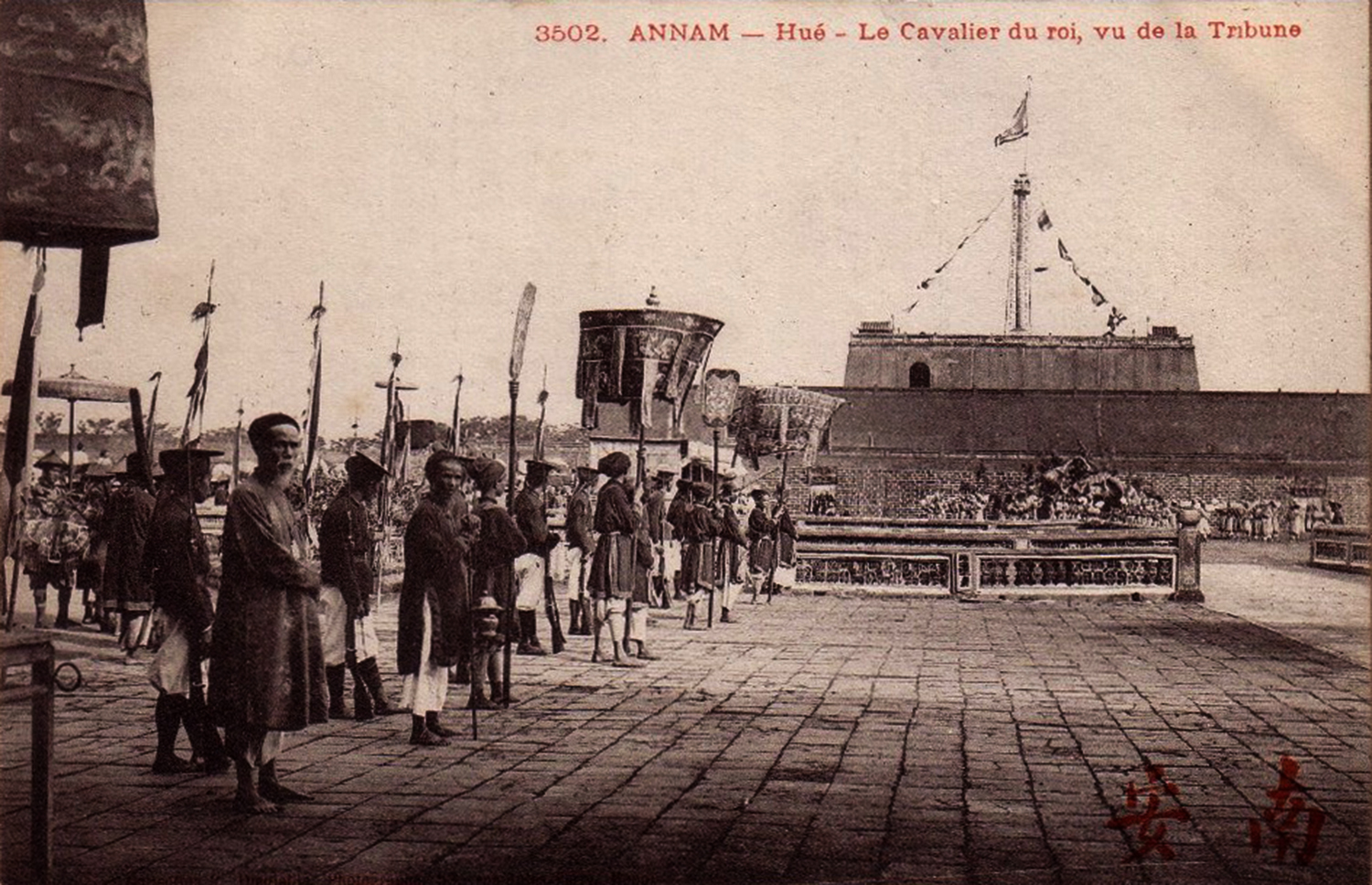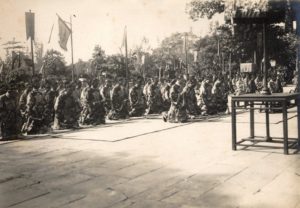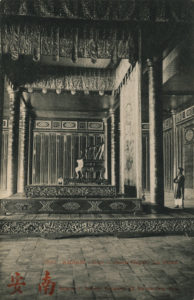
It was in the prison where he had been confined since the death of Phan-Dinh-Binh that they found the new king, designated as heir by the Grand Dowager Empress, the Court and the Co-Mat, and conducted him to the palace.
The induction ceremony took place on 31 January. It was a marvellous spectacle; more than 300 mandarins, all dressed in their great costumes of brocaded silk of different colours, all entirely new, were arrayed in front of the throne room; 300 men of our naval infantry formed the royal guard of honour.
 Bursts of artillery exploded upon the ramparts, and bugles rang in the fields, as our Résident-Supérieur, M. Rheinart, followed the civil and military officials by standing in attendance before the throne.
Bursts of artillery exploded upon the ramparts, and bugles rang in the fields, as our Résident-Supérieur, M. Rheinart, followed the civil and military officials by standing in attendance before the throne.
Suddenly, great shouts were heard from the interior of the palace, and a few moments later the new king appeared.
He is a nice little boy of just 10 years, slightly little crushed by the weight of his brocaded royal costume and hindered in his movement by his great mandarin boots.
After having offered his tiny hand to M. Rheinart and two or three other persons, he climbed, supported by a servant, onto the gilded throne, which was just too high for him.
 He responded to M. Rheinart’s speech in a crystal clear voice. The French officials then retired to let the mandarins do their laïs. At the front of the throne room were the princes; beside them were the ministers and great dignitaries, and finally all the other mandarins.
He responded to M. Rheinart’s speech in a crystal clear voice. The French officials then retired to let the mandarins do their laïs. At the front of the throne room were the princes; beside them were the ministers and great dignitaries, and finally all the other mandarins.
At the command of a voice singing a kind of chant, the laïs began, so numerous and so frequent that they could almost be considered as some form of exercise.
At the end of the ceremony, the new king was led in procession into his private apartments.
(Avenir de Tonkin)
Tim Doling is the author of the guidebook Exploring Huế (Nhà Xuất Bản Thế Giới, Hà Nội, 2018).
A full index of all Tim’s blog articles since November 2013 is now available here.
Join the Facebook group page Huế Then & Now to see historic photographs juxtaposed with new ones taken in the same locations, and Đài Quan sát Di sản Sài Gòn – Saigon Heritage Observatory for up-to-date information on conservation issues in Saigon and Chợ Lớn.

